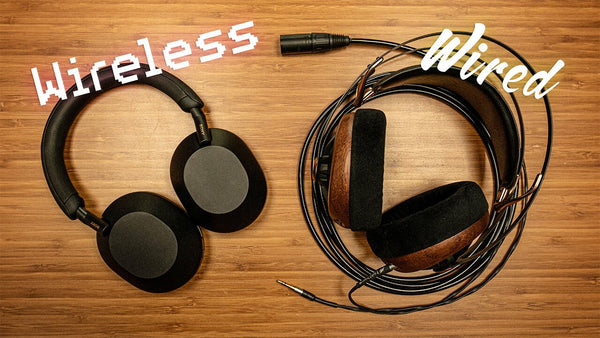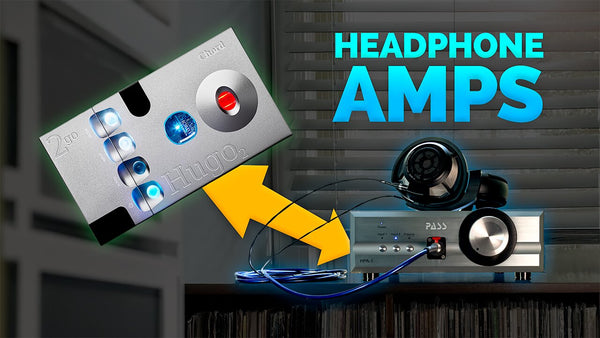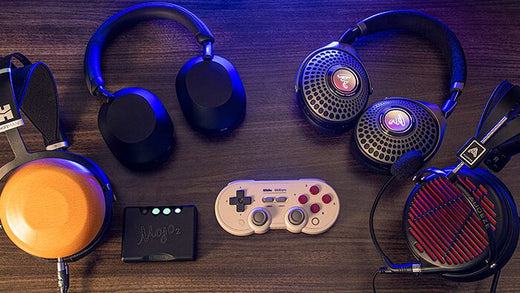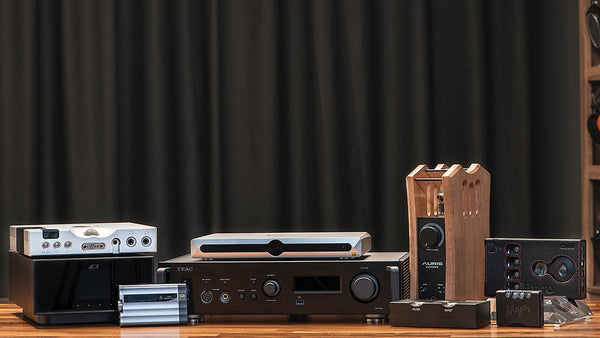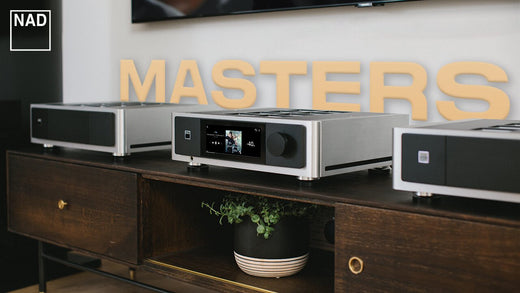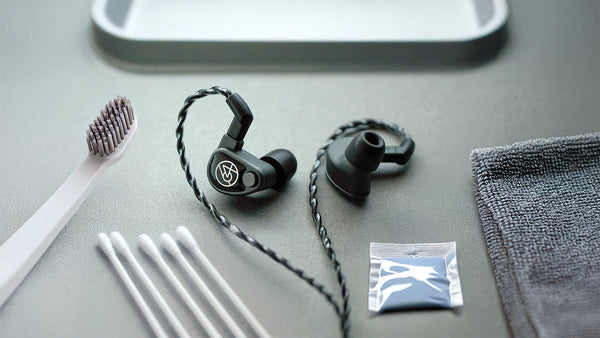Music Lovers vs. Audiophiles: The Art of Hearing Differently
Read Time: Approx. 22 min.

TL;DR: What Defines an Audiophile versus a Casual Music Listener?
If we all love music, what exactly is it that audiophiles are pursuing that others are not? Is it just an archetypical word we use to justify a sense of musical elitism? Or does it actually denote something substantial, separating us from them? What really separates casual music lovers from audiophiles? Or is all of this just silly audiophile nonsense?
Who are the audiophiles amongst us? Maybe, you yourself are an audiophile. Or, perhaps you’re a digital music lover, dipping your toes into the water, just getting started in the hobby. Whatever brings you here, I expect we have that in common: this insatiable love for music.
To begin finding answers, let’s examine some of the gatekeepers, the barriers to entry, and the elephants in the room by analyzing the common misconceptions that regular music lovers might have about audiophiles.
The first audiophile was born when a music lover turned up the bass and treble controls on a stereo amplifier while listening to music.
Myths and Misconceptions about Audiophiles
What is an audiophile? We all have an idea–and chances are, that idea is much different from the person next to you. Most hobbies are cut and dry. Do you collect "this?" Then you're "that." Audiophilia is a bit more nebulous. But it doesn't have to be. There are a lot of conceptions and misconceptions about being an audiophile, but do any of them hold a nugget of truth?
The Music Snob

Generally, one might stereotype or think of the audiophile as having a massive collection of vinyl records meticulously organized in an acoustically treated personal listening room. I personally have imagined a true audiophile as someone sitting on the floor in the lotus position like a young Steve Jobs, wearing the best pair of headphones I’ve probably never even heard of, and getting lost in a vast collection of music scattered all over the floor. We might also think of an audiophile as someone with a “sophisticated palate” that jeers and snarls at other “lossy” formats the digital age has both bestowed upon the casual music lover, but taken away from the audiophile.
The Internet Forum "Experts"

The sometimes overly opinionated gatekeepers. Every specialty hobby has them: those trolling the forums offering “expert” information from behind a keyboard. Sometimes, it’s meant to be helpful to newcomers, but the vast majority of it is simply misinformation that stems from the “expert’s” goodwill, but ultimately stands in the way of our progress. After all, the road to hell is paved with good intentions.
Does This Sound Familiar?
Isn’t this reminiscent of the issues serious newcomers to similar trade-crafts also face? New photographers, for example, face similar barriers-to-entry when considering the latest and greatest in DSLR vs mirrorless cameras on the market. Then, there are of course photography’s own gate-keepers: camera buffs. The one’s lamenting over losing out on the golden years of film. Just like the mysterious artifacts that make vinyl records a special format for audiophiles, film, too, has been overlooked in a digital age where the best camera has become the one that’s most readily available to the photographer.
Similarly, for music lovers, the best music experience has become driven more by consumer demand for the most portable DAP (digital audio player) or music player with the largest capacity internal hard drive than superior hi-res audio sound. Instead, thousands of lossy MP3 files that could be called upon at the drop of a hat has been the preferred choice of music lovers. For audiophiles and camera buffs, alike, there is an implicit beauty to both vinyl and film that are often overshadowed by today’s modern conveniences. Sometimes the nature of innovation is cruel to the passionate: it doth giveth and it doth taketh.
What Are We Music Lovers Missing Out On?
But there must be more than what these misconceptions portray. After all, for the complete newbie or amateur of any discipline worth the effort, there must be a reason why so many connoisseurs become so engrossed by their passions. Take it from the camera buffs, the wine connoisseurs, the cigar aficionados and even the guitar heroes, alike. All detail a deep appreciation for the unique processes their crafts inherited from the past. Learning from the past, it seems, is almost a prerequisite for acquiring the sophisticated palate that moves the needle beyond the average and into the exceptional. It’s essential for unlocking the achievement of appreciation, itself. It enriches human life.
Surely, then, music lovers can’t simply write off the enthusiastic claims of audiophiles as mere “snobbery?” No. These are passions; labors of love, and intelligent thoughts formed over years of engagements with their passions.
Just like the journey that leads to an educated recognition of finely-crafted single-malt scotch, hand-rolled cigars, or even stunning photographs, there’s a learning curve that deepens the audiophile’s music experience, and we as music lovers benefit from their expertise. That is to say, if we remain open to what can be learned from audiophiles, there is even more to gain from our shared appreciation for music. There’s just too much passion to be ignored. Is there something about our modern era, then, that’s making the rest of us miss out on what the audiophiles may already know?
Chasing White Rabbits?

What concrete goals are audiophiles pursuing that average music lovers just aren't getting? What’s all the buzz really about? Are they just chasing white rabbits?
Webster's Dictionary defines an audiophile as “a person who is enthusiastic about high-fidelity sound reproduction.”
Let’s investigate this. Music lovers really love their music. But, the assumption is that audiophiles have acquired a taste for a lot more than just the music. Before we examine what the audiophile pursues, let’s first follow the trail of music lovers throughout popular-culture to find out why there really is a difference in what each pursues, and especially how they pursue it.
Format Wars: The Pursuit of Crappiness?

In the bestselling novel about secret societies, “The Da Vinci Code,” Dan Brown writes, “History is always written by the winners.”
Today, it’s clear who the winners of the format wars are. Every time we see the now iconic washed-out white earbuds sticking out of both sides of someone’s head like cotton swab Q-Tips, the winner is evident. The iPod may have won the format war of the 2000s against the Compact Disc (CD), but in 1979, it was the Sony Walkman TPS-L2 stereo cassette-player that did it first by nearly obsoleting the vinyl record format, entirely.
The compact size of cassette-tape was one of the first innovations in portable music, making it more conducive for car stereos and mobility compared to delicate vinyl or clunky 8-tracks. For the first time in history, music lovers could truly accessorize their music with style and be mobile. It was the beginning of looking "cool" while teens strutted down the crowded halls on their way to class, wearing colorfully stylish headphones connected to a Sony portable Walkman. And thus, the rise of headphones as an accessory for music lovers was born out of the ashes of superior sound.
The Original Music Lover's Headphone Accessory
Recorded music, in many ways, has enabled non-musicians to have a sense of the same creative catharsis that motivates musicians to improvise and composers to compose. Recorded music, then, can be thought of as a precursor to virtual reality, or even video games that simulate an experience. Like a good book, part of the pursuit is escapism and experiencing something spiritually greater.
The same can be said for a choir monk in the Middle Ages, escaping the humdrum and the slog of medieval life who takes his place in the choir and lends his voice to the harmonies reverberating inside of the cathedral’s walls.
Today, we also find respite from our fast-paced always-on-the-go existence every time we stream a curated playlist in the car or put the needle on a record at home. Recorded music truly is a privilege of modern civilization.
In the Beginning, There Was...the Headphone
But long before the advent of the Walkman, the MP3, the iPod, Beats, and premium streaming services like Pandora, Spotify, Tidal and Apple Music, headphones were the first technology on the scene, paving the way for music lovers to have access to the now coveted privilege of mobility. Interestingly though, in the 1880s, headphones were invented, but they had nothing to do with music nor mobility at all.

Headphones (or at least their earliest predecessors) were first in use by telephone switchboard operators and morse code intercept operators to listen more comfortably to communications on the line. Since all audio at that point was mono, the first headphones used by telephone operators were little more than a single earpiece with a microphone that rested on the operator’s shoulder. In 1910, an inventor named Nathaniel Baldwin began manufacturing the first headphones to be worn by U.S. Navy soldiers for intercepting signals intelligence during World War I. These headphones featured a more modern design that we would likely recognize today.

By the 1930s, recorded music as a medium was becoming more prevalent. A need for enjoying music without disturbing others in the household began to emerge. The first Beyerdynamic headphone for music lovers hit the market in 1937. What had always been a tribal experience shared by all who gathered around the gramophone speaker, suddenly manifested greater potential as an experience uniquely personal for the individual.
Family members could finally enjoy music without disturbing others in the same room where the music player was prominently featured as a decorative piece of furniture. The most important feature of headphones, however, was the enclosed design, isolating sound, and preventing it from leaking out. Headphones offered an entirely new way for the individual to enjoy music.
In 1958, John Koss, founder of Koss headphones, revolutionized the headphone user experience in a way that would make Steve Jobs and Dr. Dre envious when his company brought the first stereo headphones to market. Headphones that could represent the stereo-field of recorded sound in true stereo launched an all-out onslaught on awaiting eardrums and changed the experience of listening to recorded music forever.
The impact stereo had on recorded music was enormous and cannot be understated. Stereo was a game-changer in the history of recorded music, and this brought an even more immersive experience to stereo recordings enjoyed through headphones.
The Rise of Headphones as an Accessory

Headphones were being manufactured for the sole purpose of music listening, but they still wouldn’t be designed with mobility in mind until much later. With help from MTV, by the 1980s, the age of excess had produced a new emphasis on music culture previously unseen: the music video. Suddenly, looking cool became so ingrained in popular-culture, newer generations of music lovers understandably lost at least some interest in great sound.
Instead, they favored the discoverability of new music that was a product of the recording industry’s marketing machine, pumping out new genres and artists for all music lovers to explore. The visual stimuli was everywhere and it was enriching enough for most music lovers to overlook the compromises occurring in their listening sessions.
In the 2000s, Beats eventually capitalized on the same trend by marketing their particular brand of “coolness” to younger generations of music lovers. And thus, the rise of convenience over fidelity was born and reborn again.
This paved the way for Sony, Apple, and Beats to accessorize the headphone industry and dominate the digital music culture of an entire generation of music lovers. But, has all this emphasis on accessorizing the music lover’s mobility made music, itself, somehow more disposable? By making music, itself, the new accessory?
Top 4 Entry-Level Headphones for Budding Audiophiles
Shop Audiophile Headphones
The Rise of Custom Solutions by Necessity
Some would argue “Yes.” To the average music lover, headphones can be a fashion accessory. But to an audiophile, headphones are a necessity of a different kind. The rise of headphones as a fashion accessory in the music lover’s mobile lifestyle may have had some negative impact on music and fidelity for the general public. But not so for audiophiles. For audiophiles, the headphone created yet another opportunity for customized audio solutions.
For the general public, listening to music is about enjoying the song. But audiophiles listen differently. Like a composer, audiophiles listen to the bigger picture as well as the individual parts. They enjoy dissecting the music; putting a work of art under the microscope. They listen to the mix, the tonal balance of all the instruments. Nuances in the musical production are a feast. They savor every little morsel. While many audiophiles are not, themselves, trained musicians, they listen like composers. They listen more analytically. And their tools must enhance their attention to detail. If this sounds familiar, then you just might be an audiophile too. But without the tools or the headphones necessary to listen to music the way audiophiles do, there's no way to know or hear the difference. There's only one path, and that's by upgrading the equipment music lovers already have. For more information on how to get started, check out this guide to closed back vs open-back headphones.closed-back
But audiophiles listen differently. Like a composer, audiophiles listen to the bigger picture as well as the individual parts.
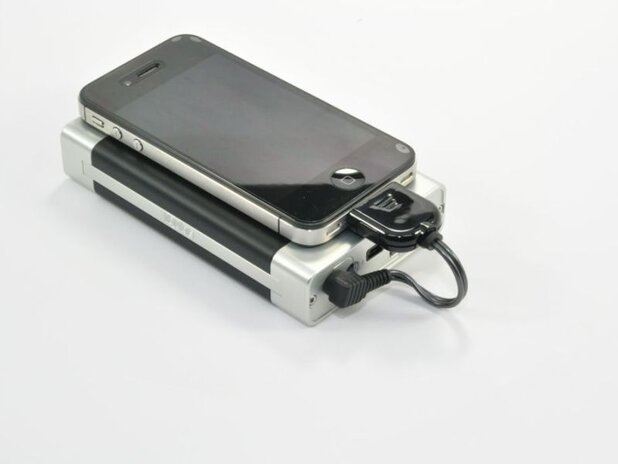
Pictured: Silver Dragon LOD Cable for Apple iDevices
In the recent past, the LOD cable was used by audiophiles to bypass the cheap internal amplifier section in most popular Digital Audio Players (DAP) such as the iPod. A LOD cable was, essentially, a special type of custom cable, usually short in length, that audiophiles used for connecting the DAP's internal line-out interface to a separate external interface. It was previously used by audiophiles to bypass a portable audio player’s built-in headphone op-amp in favor of an external line-level amplifier. Implementing this custom cable into the audiophile’s signal-chain allowed audiophiles to increase the audio signal’s amplitude, and drive audiophile-quality headphones with a higher impedance.
Today, external devices are available as all-in-one portable solutions, making it even easier for music lovers to get started. The next step for music lovers, then, seems to be upgrading the cable connection between their DAP, such as a smartphone, tablet, or iPod Touch and an external Digital to Analog Converter (DAC). Using an audiophile-grade custom cable solution such as a Silver Dragon Premium USB Cable or Silver Dragon USB cable, for example, will allow music lovers to bypass the cheap consumer electronics of an iOS or Android device’s internal DAC/amplifier section.
Smartphones, tablets and computers are excellent multitaskers for a wide gamut of duties. However, when it comes to audio fidelity, computers aren’t designed to do this one thing exceptionally well. For audiophiles, this is especially true regarding the playback or streaming of hi-res audio at full resolution. This means the vast majority of digital music lovers are not equipped with the audiophile gear necessary to consume their music with all the beautiful detail that could be hiding in their digital music libraries. Fortunately, external solutions are available to offload the digital to analog conversion and amplification duties of a smart device’s cheaply made internal DAC/amplifier section.
A portable DAC Amp, for example, is a better way. A portable DAC Amp is an audio device that’s dedicated to the task of converting digitally encoded music sources to more accurate analog waveforms. Offloading the duties of the internal DAC/amplifier section built into your smartphone, tablet or computer to a more portable external DAC Amp will immediately lift the veil enshrouding digital music for discerning ears.
For truly mobile audiophile quality on the go, the Chord Mojo 2 is one of the most popular portable DAC headphone amps available. It’s an excellent example of a portable DAC Amp for music lovers to get started. Combine a Chord Mojo 2 portable DAC Amp and a custom Silver Dragon USB Cable to connect with the smartphone you already own, and music lovers will be set up to fall in love with their music all over again; even while on the go!
Top 4 Portable DAC Headphone Amps
Reframing the Big Picture
Just as audiophiles are not to be blamed for making things too complicated, music lovers, too, are not to be blamed for over-simplifying the trends that drive consumer demands. The companies marketing these products are really who the blame should be shifted to, but it’s not their fault either. Innovation, itself, breeds both costs and benefits. It really is how one looks at the bigger picture.
For example, when Apple released the iPod in 2001, it made access to a thousand songs all in a single portable device possible for the very first time for music lovers, albeit at a sacrificed audio resolution. But, the marketing-hype focused on what the user would gain: being able to carry a thousand songs in your pocket rather than the loss in audio fidelity. This was Steve Job’s marketing brilliance, and it really was a revolutionary event for music lovers in 2001.

The very idea of users being able to carry around that much music in their pockets was what Apple and iPod customers focused on.

Back in the early 2000s, the costs to manufacture portable SATA hard drives were still an expensive premium compared to what it costs today. For 2001, having access to a thousand songs was a lot sexier than a hundred lossless “CD quality” songs. Think about that. For any music lover, this innovative idea, alone, was enough to convince millions of people to ignore the cost to audio fidelity and maybe even their listening pleasure. The very idea of users being able to carry around that much music in their pockets was what both Apple and iPod customers focused on.
It was the most optimistic sales pitch of the decade, and it helped define the consumer behaviors for an entire generation of digital natives for the next 10 years. It disrupted not only recording formats like the CD and vinyl but also resuscitated a nearly dead recording industry back from the grave. For any music lovers in 2001, it was game-changing, and at the time, the benefit was worth whatever the cost. But did audiophiles get left behind?
The Modular Aesthetic
Audiophiles have a mentality, an aesthetic they follow, that’s similar to a hacker’s. The hackers' manifesto is the pursuit of truth no matter the costs. Hackers are an adaptive species. They seek authenticity, and like audiophiles, their aesthetic approach has always been modular by necessity since the very beginning of the technical hobby. This modular aesthetic allows audiophiles and hackers, alike, to control the outcome of any given opportunity where truth is the prize. There is rich beauty in truth, and when it comes to music, audiophiles are truth-sentinels.
Consequently, audiophiles just do not approach their listening sessions in the same manner as other music lovers. The pursuit is in adapting the cathartic experience that music shares with the audiophile to the ergonomics of any given situation, whether at home or mobile. Without compromise.
Audiophiles almost never negotiate their experience for immediate gratification, if it means compromising the source’s sound signature. For the audiophile, the experience, then, (if it can be helped) is never negotiated. This is ultimately the most distinguishing feature of audiophiles, separating them from their music-loving brethren. And it’s a lifestyle.

For the audiophile, the experience is never negotiated. This is ultimately the most distinguishing feature of audiophiles, separating them from their music-loving brethren. And it's a lifestyle.
The Pursuit of Truth

This approach runs contrary to the average music lover’s goal to consume music anywhere and everywhere. The extent to which audiophiles are willing to go to preserve the unique sonic signatures of recorded music in such modular and flexible ways may appear as "audiophile nonsense," and maybe even somewhat “backward” or “overkill” to regular music lovers. But, then again, on a spiritual level, not everyone listens to music the same way.
The pursuit is to adapt the cathartic experience that music shares with the audiophile to the ergonomics of any given situation, whether at home or mobile, without compromise.
Everyone takes their own spiritual truth from music, and for many, the pursuit is a sacred path. Audiophiles simply seek to preserve that sanctity. They pursue music to sound the way the artist intended it to sound. And they incorporate all components of a personal sound signature to preference by necessity. If necessity is the mother of invention, then audiophiles are very inventive hackers, indeed.
Record Redemption
For an audio format that seemed doomed for obsolescence throughout the last two decades, the vinyl record format is the comeback kid of the century. Recently, a monumental record was set when revenues for vinyl sales actually outperformed combined sales of music streaming services for the first time in music history. Interestingly, out of the age of excess that digital innovations bestowed to music lovers, a resurgence in vinyl records, and the renewed interest in analog recording processes have been ironic, albeit, head-scratching byproducts. But those who love vinyl are simply people who love music. Vinyl is just one of the many ways to love music as it turns out. Is it any wonder, then, that convenience isn’t the only feature people care about when listening to music?

Digital natives as it turns out are hearing the difference for themselves. The audiophile’s modular aesthetic is becoming more practical for everyday music enjoyment, and music lovers everywhere are discovering that all the effort in buying and maintaining vinyl is really worth it. Thanks to vinyl, digital music lovers are finding out what audiophiles already know: that their musical appreciation has deepened and that they are discovering more music than they ever had before their investment in vinyl. Audiophiles understand this.
When it comes to digital hi-res audio, it’s perhaps only a matter of time until a point of singularity emerges in technology where audiophiles and music lovers, alike, experience the best of both worlds, and become even less distinguishable. But until that day arrives, music lovers just have to get started. By training their ears.
The Verdict
As mentioned at the beginning of this article, the first audiophile was born when a music lover turned up the bass and treble settings on a stereo amplifier. If music lovers never upgrade their headphones, cables or DAC, they will never give their ears the chance to experience how composers and artists, themselves, hear music: as it was intended. Audiophiles are like bookworms voraciously reading and squirreling away new nuggets of “a-ha” moments that the general public is simply missing out on.
Fortunately for music lovers, the easiest steps to break through seems to be upgrading to a portable DAC Amp, and introducing an upgraded audiophile grade USB cable connection into the signal chain. Doing this will bypass the cheap consumer electronics built into their smart device. Music lovers can also consider upgrading to a custom audiophile grade headphone cable to begin taking full advantage of the gear they already own.
Are you ready to wake up and take the next step?
Related Videos
Audiophiles: 5 Myths & Misconceptions
How to Pick Your Perfect Pair of Headphones
Music Streaming 101: Understanding the Basics






